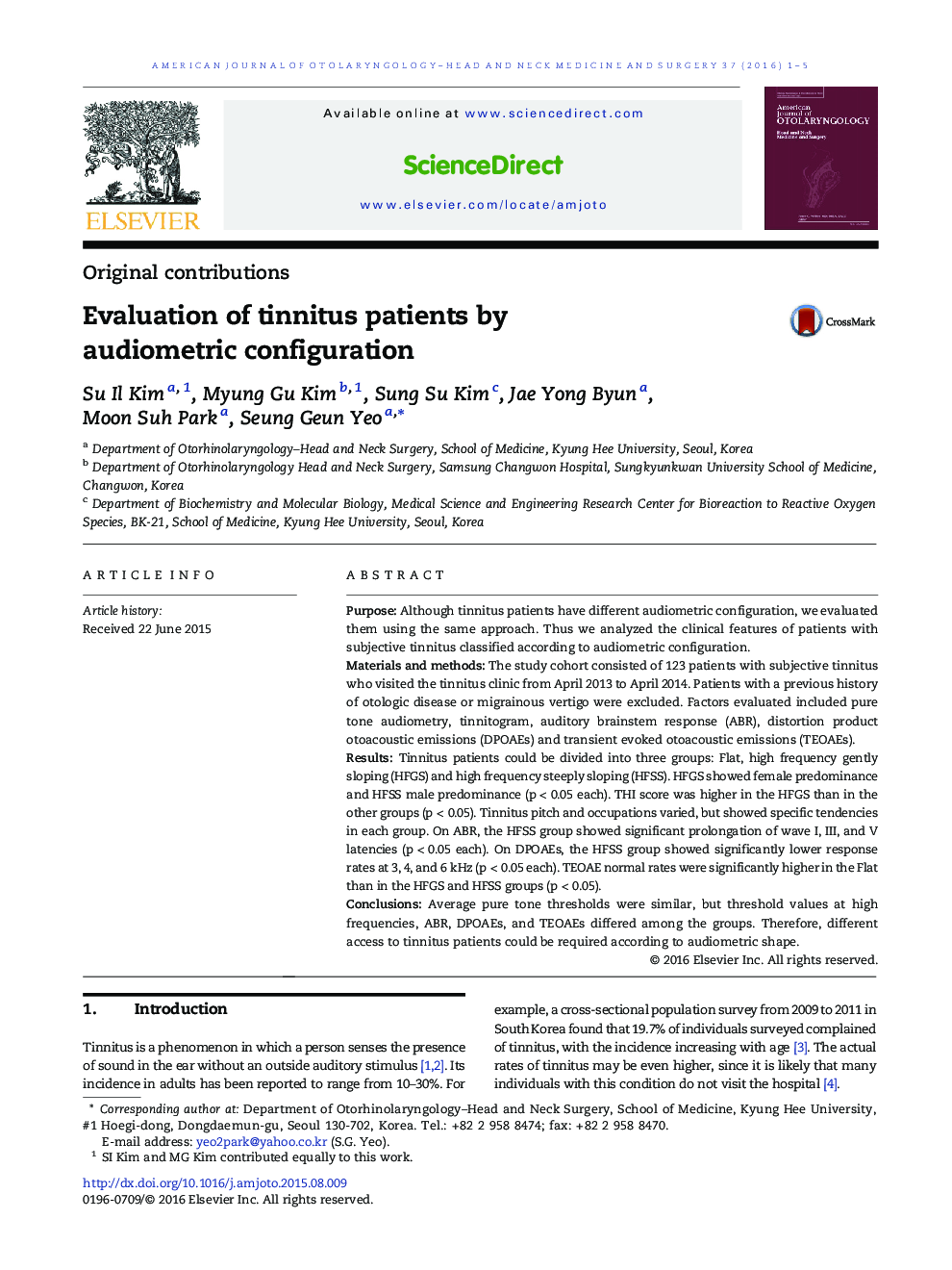| Article ID | Journal | Published Year | Pages | File Type |
|---|---|---|---|---|
| 4103100 | American Journal of Otolaryngology | 2016 | 5 Pages |
PurposeAlthough tinnitus patients have different audiometric configuration, we evaluated them using the same approach. Thus we analyzed the clinical features of patients with subjective tinnitus classified according to audiometric configuration.Materials and methodsThe study cohort consisted of 123 patients with subjective tinnitus who visited the tinnitus clinic from April 2013 to April 2014. Patients with a previous history of otologic disease or migrainous vertigo were excluded. Factors evaluated included pure tone audiometry, tinnitogram, auditory brainstem response (ABR), distortion product otoacoustic emissions (DPOAEs) and transient evoked otoacoustic emissions (TEOAEs).ResultsTinnitus patients could be divided into three groups: Flat, high frequency gently sloping (HFGS) and high frequency steeply sloping (HFSS). HFGS showed female predominance and HFSS male predominance (p < 0.05 each). THI score was higher in the HFGS than in the other groups (p < 0.05). Tinnitus pitch and occupations varied, but showed specific tendencies in each group. On ABR, the HFSS group showed significant prolongation of wave I, III, and V latencies (p < 0.05 each). On DPOAEs, the HFSS group showed significantly lower response rates at 3, 4, and 6 kHz (p < 0.05 each). TEOAE normal rates were significantly higher in the Flat than in the HFGS and HFSS groups (p < 0.05).ConclusionsAverage pure tone thresholds were similar, but threshold values at high frequencies, ABR, DPOAEs, and TEOAEs differed among the groups. Therefore, different access to tinnitus patients could be required according to audiometric shape.
